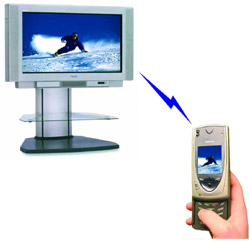This work investigates how to provide battery-efficient, longer range, error-resilient and robust mobile video broadcast transmission. The central idea hinges on the concept of Split channels. Split channels depart from the traditional DVB-H broadcast OFDM channels, in that they exploit the more sophisticated hierarchical quadrature modulation and coding at the lower layers, to split the traditional OFDM DVB-H broadcast data channel, in effect, into a low priority (LP) and a high priority (HP) broadcast channel. More "intelligent" video applications (at the source) can utilize these channels to enable more efficient broadcast video transmission. Depending on the signal condition and the distance from the transmit tower, a mobile device can flexibly switch between LP and HP channel, or even aggregate these channels leading to better video performance, better error-resilience, better coverage, improved channel switching times, and better battery efficiency. The current work concentrates not only on communication subsystem design, but also on new and innovative uses of H.264 video codec to work with Split Channels.
Mobile Video Broadcasting project Cambridge Open Mobile System
|

